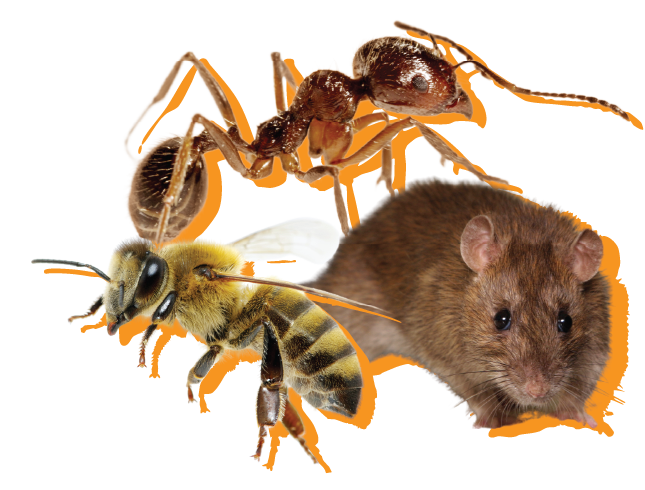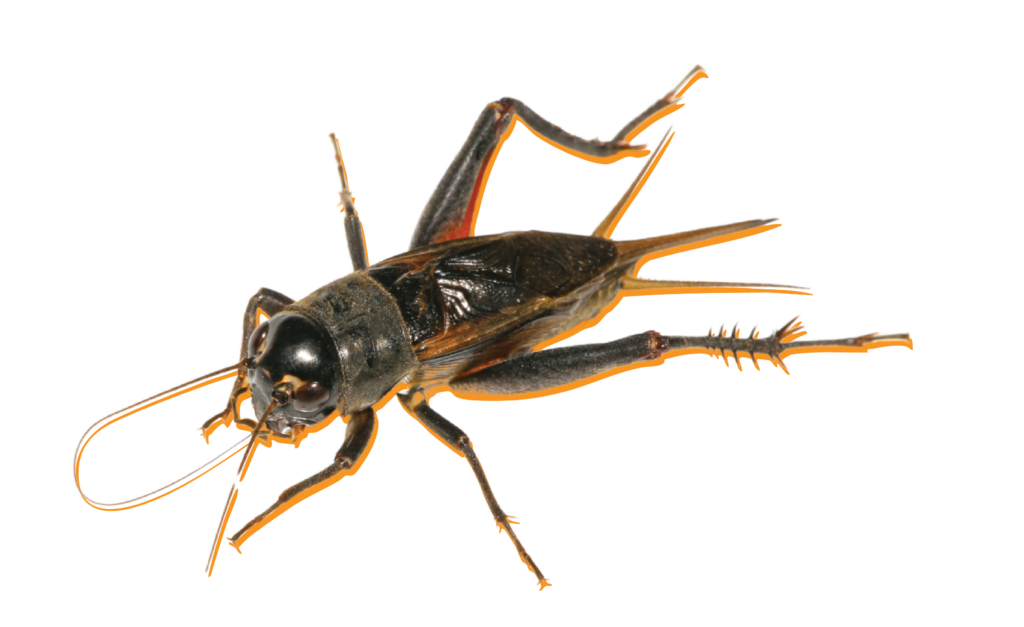Table of Contents
- Key Points
- What Is Green Pest Control?
- Popular Green Pest Control Methods
- The Benefits of Eco-Friendly Pest Control
- Limitations and Challenges of Green Pest Control
- How to Make Your Pest Control Greener
- Is Green Pest Control Right for You?
- Find Green Pest Control Services in Greenville, SC
- References
Key Points
Pest control is a crucial part of maintaining a safe, healthy home—but as environmental awareness grows, more homeowners are asking: Is there a better way to keep pests at bay without harming the planet, not to mention people or pets who live in the building? The answer is yes.
A recent poll by the industry news website Pest Control Technology found that consumers are more aware of green and eco-friendly pest methods and come to expect them as an option.1 In this comprehensive guide, we will explore what “green pest control” really means and how it works, as well as its benefits and limitations. We have also included practical tips for making your pest management as eco-friendly as possible.
What Is Green Pest Control?
“Green pest control”—sometimes called “eco-friendly” or “sustainable pest management”—can have many definitions. In general, it has as its goal reducing the impact of pesticides on people and the environment by replacing chemical treatments with natural ones, where possible.
Unlike traditional pest control, which often relies on broad-spectrum chemical pesticides, green pest control uses targeted, low-toxicity methods. Green pest control also incorporates preventative measures as an alternative to or complement to elimination, and emphasizes long-term solutions over quick fixes.2
The Core Principles of Eco-Friendly Pest Control
There are several traits that characterize most green pest control policies and services.
Prevention First
The foundation of green pest control is prevention. It is far easier—and safer—to keep pests out than to eliminate them after they have invaded. This approach is multifaceted and involves tactics like:
- Sealing cracks, gaps, and entry points around your home
- Storing food and garbage in sealed containers
- Fixing leaky pipes and eliminating standing water
- Removing clutter and debris where pests can hide
By making your home less attractive to pests, you reduce the need for any intervention—chemical, green, or otherwise.
Integrated Pest Management
Integrated Pest Management (IPM) is the backbone of eco-friendly pest control. IPM is a holistic, science-based approach that combines multiple strategies to manage pests with minimal environmental impact. The steps include:
- Inspection and Monitoring: Regularly checking for signs of pests and identifying the species involved
- Accurate Identification: Understanding which pests are present and their life cycles
- Preventive Measures: Addressing the root causes of infestations, such as food sources or moisture
- Targeted Treatments: Using traps, baits, or botanical insecticides only when necessary
- Ongoing Evaluation: Monitoring results and adjusting strategies as needed.
IPM is not a one-size-fits-all solution. Rather, it is tailored to each specific pest problem and environment.
Selective, Low-Toxicity Products
When treatments are necessary, green pest control favors products that are:
- Derived from natural sources (plants, bacteria, minerals)
- Targeted to specific pests, minimizing harm to beneficial insects, pets, and people
- Labeled as “exempt,” “minimum risk,” or “reduced risk” by the U.S. Environmental Protection Agency
Common examples include essential oils, insect growth regulators, boric acid, diatomaceous earth, and Bacillus thuringiensis (Bt), a naturally occurring bacterium and biopesticide found in soil.3
Popular Green Pest Control Methods
Next, let’s dig into some of the most popular green pest control treatments.
Biological Controls
Biological pest control uses natural predators, parasites, or pathogens to keep pest populations in check. Examples include:
- Ladybugs: Released in gardens to control aphids
- Nematodes: Microscopic worms that target soil-dwelling pests like grubs and termites
- Bacillus thuringiensis: A bacterium that kills specific insect larvae without harming other wildlife
Botanical and Mineral-Based Products
- Neem Oil: Extracted from the neem tree, this oil disrupts the life cycle of many garden pests while being non-toxic to beneficial insects when used correctly.4
- Essential Oils: Oils like peppermint, citronella, and eucalyptus can repel insects naturally.
- Diatomaceous Earth: A fine powder made from fossilized algae, it dehydrates and kills crawling insects but is safe for people and pets.5
Physical Barriers and Traps
- Sealing Entry Points: Caulking cracks and installing screens to keep pests out
- Sticky Traps and Baits: Non-toxic ways to monitor and reduce pest populations
- Row Covers and Fences: Protecting gardens from insects and rodents without chemicals
Repurposing Food Waste
Some food scraps, such as citrus peels and coffee grounds, can be used to repel pests in gardens and around the home, reducing both waste and pest problems.
The Benefits of Eco-Friendly Pest Control
There are many advantages to using green pest control services. Here are a few of the main ones to consider.
- Healthier Homes: Green pest control methods are less toxic, reducing the risk of exposure to harmful chemicals for your family and pets. This is especially important for children, the elderly, and those with allergies or respiratory conditions.
- Environmental Protection: Eco-friendly pest control minimizes pollution of air, water, and soil. By targeting only the pests you want to eliminate and using biodegradable products, you help preserve beneficial insects, pollinators, and local ecosystems.
- Sustainable, Long-Term Solutions: Prevention and IPM focus on addressing the root causes of pest problems, leading to more lasting results and fewer repeat infestations. Over time, this can reduce the need for any pest control interventions at all.
- Reduced Pest Resistance: Because green methods use a variety of strategies and targeted treatments, pests are less likely to develop resistance compared to repeated use of the same chemical pesticides.
Limitations and Challenges of Green Pest Control
While green pest control offers many advantages, it is important to be aware of its limitations:
- Slower Results: Natural and biological methods often take longer to show visible effects compared to chemical sprays.
- Limited Efficacy for Severe Infestations: Eco-friendly solutions are best for prevention and mild problems. Severe infestations may still require targeted chemical intervention.
- Frequent Reapplication: Many natural products break down quickly and need to be reapplied regularly to remain effective.
- Higher Costs: Some green products and labor-intensive practices can be more expensive upfront. The customer needs to understand this before committing to the process.
- Availability: Not all eco-friendly methods are widely available, and finding trained professionals may be challenging in some areas.
How to Make Your Pest Control Greener
If you are ready to embrace eco-friendly pest control, here are some practical steps:
- Start with Prevention: Keep your home clean, dry, and well-sealed. Remove food and water sources that attract pests.
- Work with Professionals: Choose a pest control company that specializes in green or IPM-based services. Ask about their products and methods.
- Use Natural Products Wisely: When using botanical or mineral-based products, follow label instructions and avoid overuse.
- Encourage Beneficial Wildlife: Attract natural predators to your garden by planting diverse, native plants and avoiding broad-spectrum pesticides.
- Monitor and Maintain: Regularly inspect your home and garden for signs of pests, and address issues promptly before they escalate.
Is Green Pest Control Right for You?
Green pest control is an excellent choice for most homeowners, especially those concerned about health, safety, and the environment. It is particularly effective for preventing and managing minor pest issues.
However, for severe or persistent infestations, a hybrid approach that combines eco-friendly methods with targeted chemical treatments may be necessary for complete control. An experienced pest control service will be able to advise on the best balance based on your unique preferences and goals.
Find Green Pest Control Services in Greenville, SC
Eco-friendly pest control is not just a trend—it is a responsible, sustainable approach that benefits your family, your community, and the planet. By focusing on prevention, using targeted treatments, and working with knowledgeable professionals, you can enjoy a pest-free home without compromising your values or the environment.
Ready to make the switch? Contact our team today to learn more about our green pest control services and how we can help you protect your home—naturally.
References
- Brad Harbison, “Residential Customers More Aware of Green Products/Services, Poll Finds,” Pest Control Technology, January 2025: https://www.pctonline.com/news/residential-customers-more-aware-green-products-poll-finds/.
- Venkata Kanaka Srivani Maddala, “Green pest management practices for sustainable buildings: Critical review,” Science Progress, April 2019, https://pmc.ncbi.nlm.nih.gov/articles/PMC10424538/#bibr1-0036850419842459.
- “Bacillus Thuringiensis (Bt) Fact Sheet,” National Pesticide Information Center, retrieved on April 15, 2025, from: https://npic.orst.edu/factsheets/btgen.html.
- “How to Use Neem Oil Spray as an Organic Insecticide,” The Spruce, September 2024, https://www.thespruce.com/using-neem-oil-as-an-organic-insecticide-2132579.
- “What Is Diatomaceous Earth?” University of Minnesota Extension, July 2022, https://extension.umn.edu/yard-and-garden-news/what-diatomaceous-earth.


